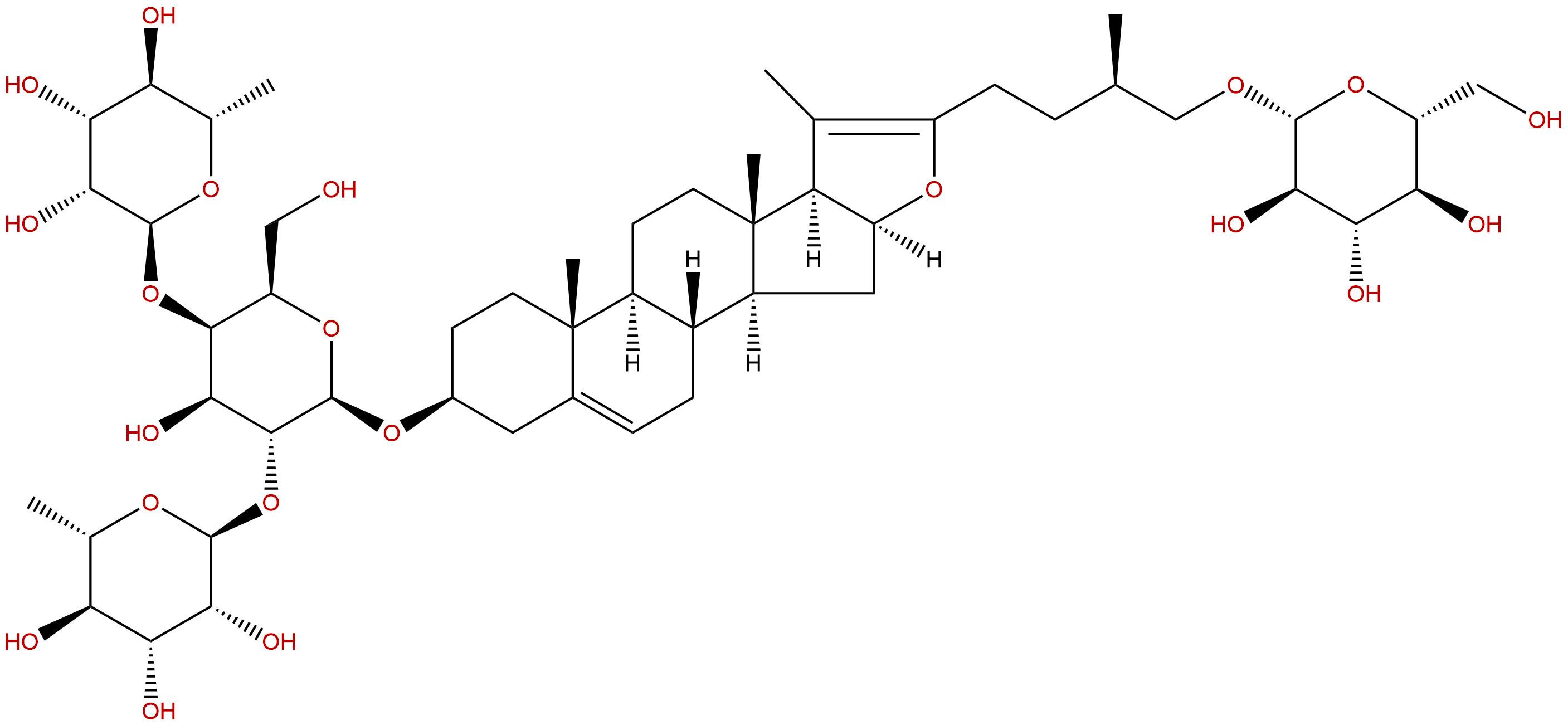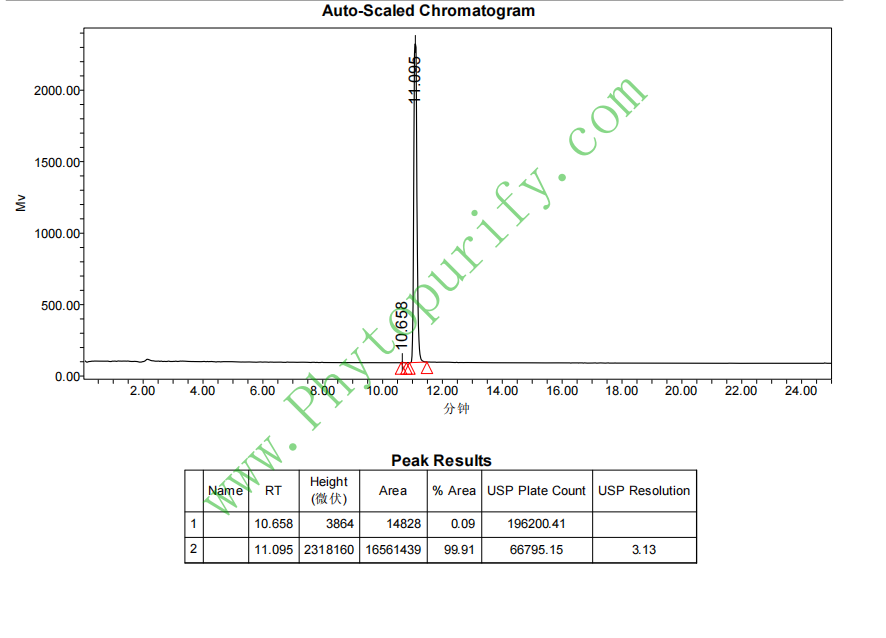
PseudoprotodioscinCAS No.:102115-79-7
|
||||||||||
 |
|
|
||||||||

| Catalogue No.: | BP1172 |
| Formula: | C51H82O21 |
| Mol Weight: | 1031.2 |
Synonym name:
Catalogue No.: BP1172
Cas No.: 102115-79-7
Formula: C51H82O21
Mol Weight: 1031.2
Botanical Source: Asparagus cochinchinensis and Trachycarpus wagnerianus
Purity: 95%~99%
Analysis Method: HPLC-DAD or/and HPLC-ELSD
Identification Method: Mass, NMR
Packing: Brown vial or HDPE plastic bottle
Can be supplied from milligrams to grams.
For Reference Standard and R&D, Not for Human Use Directly.
Inquire for bulk scale.
Description:
Pseudoprotodioscin exhibits anti-inflammatory and anticancer activities, it shows a weaker suppressing effect on the production of inflammatory cytokines, and can suppress melanogenesis in B16F1 cells.
References:
Planta Med. 2011 May;77(7):705-10.
Anti-inflammatory and anti-melanogenic steroidal saponin glycosides from Fenugreek (Trigonella foenum-graecum L.) seeds.
Fenugreek seed ( Trigonella foenum-graecum L.) is used as an herbal medicine for treating metabolic and nutritive dysfunctions.
METHODS AND RESULTS:
To determine if this plant has other beneficial effects, we tested the inhibitory activities of a methanol (MeOH) extract of fenugreek seed on the production of inflammatory cytokines and melanin synthesis in cultured cell lines in vitro. The MeOH extract inhibited the production of phorbol-12-myristate-13-acetate-induced inflammatory cytokines such as tumor necrosis factor (TNF)-α in cultured THP-1 cells, and also restrained the intracellular synthesis of melanin in murine melanoma B16F1 cells. We isolated three active constituents from fenugreek seed extracts. These were identified as the steroidal saponins 26- O-β-D-glucopyranosyl-(25 R)-furost-5(6)-en-3 β,22 β,26-triol-3- O-α-L-rhamno-pyranosyl-(1'' → 2')-O-[β-D-glucopyranosyl-(1''' → 6')- O]-β-D-glucopyranoside 1, minutoside B 2, and Pseudoprotodioscin 3. Compounds 1 and 2 strongly suppressed the production of inflammatory cytokines, whereas 3 showed a weaker suppressing effect. Melanogenesis in B16F1 cells was significantly suppressed by 1 and 3, and weakly suppressed by 2. All three compounds showed moderate cytotoxicities.
CONCLUSIONS:
These results indicate that fenugreek extract and its active constituents could protect against skin damage.
Planta Med. 2001 Dec;67(9):853-7.
Two new steroidal saponins from the rhizomes of Dioscorea panthaica and their cytotoxic activity.
Two new steroidal saponins, dioscoresides C (1) and D (2), along with a new natural product, pregnadienolone 3-O-beta-gracillimatriose (3), and two known compounds, pregnadienolone 3-O-beta-chacotrioside (4) and Pseudoprotodioscin (5), were isolated from the rhizomes of Dioscorea panthaica Prain et Burkill.
METHODS AND RESULTS:
On the basis of extensive NMR studies and chemical evidence, dioscoresides C and D were determined to be 26-O-beta-D-glucopyranosyl-3 beta,26-dihydroxy-23(S)-methoxy-25(R)-furosta-5,20(22)-dien-3-O-alpha-L-rhamnopyranosyl-(1-->2)-[alpha-L-rhamnopyranosyl-(1-->4)]-beta-D-glucopyranoside and 26-O-beta-D-glucopyranosyl-3 beta,26-dihydroxy-20,22-seco-25(R)-furosta-5-en-20,22-dine-3-O-alpha-L-rhamnopyranosyl-(1-->2)-[alpha-L-rhamnopyranosyl-(1--> 4)]-beta-D-glucopyranoside.
CONCLUSIONS:
These compounds showed mild cytotoxicity against the cancer cell lines, A375, L929, and HeLa, in a dose-dependent manner.
HPLC of Pseudoprotodioscin
